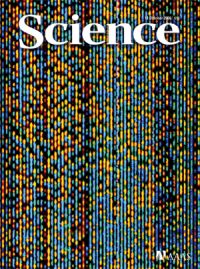 This month’s issue of Science gave me lots of food for thought.
This month’s issue of Science gave me lots of food for thought.
There was an article about Edmund Phelps, who just won the 2006 Nobel Prize in economics. It tells us that the U.S. swept the science Nobel Prizes this year — analogous to winning all the gold medals at the Olympics. Putting it this way cheapens the whole process and is a reminder of the competitive nature of people, scientists included.
On the other hand, this is an example of how a country with enough wealth and education to pay millions of people to sit around on their butts and problem solve — engineers, scientists, and economists — can contribute solutions to the world’s many problems.
Expect to see more solutions coming from India and China in the not too distant future. The three billion desperately poor of the world cannot contribute, having their hands full just staying alive. Those billions of potential problem solvers are lost to us, thanks to the tremendous rate of population growth that outstripped the economic growth, infrastructure, and education needed to keep them from being impoverished.
A second article talks about the ten year plan put forth by the California Institute for Regenerative Medicine (CIRM). California recently passed a proposition that funds stem cell research so that science can continue without being throttled by federal policies pushed by the religious right, which would withhold federal funds for such research. In my opinion, this is just one more example (along with the lack of climate change legislation) of how the present federal government is failing its citizenry. State governments and NGOs are taking up the call where the Feds have dropped the ball.
There was a long and very informative article describing the present state of the fusion reactor that will be built in France in the next decade. I know, I know: fusion is, and always will be, the power of the future. But you know what? If we can pull it off, the money will have been well spent.
Yet another article titled “Trying to Lasso Climate Uncertainty” talks about “negative learning.” Climate researchers are looking for a way to avoid building consensus around the wrong models, which actually happened for a time with ozone:
People believed that ozone’s key interactions are with other gases, until scientists realized that the critical reactions driving ozone depletion occur on the surfaces of airborne particles. With revised reaction rates, it was suddenly clear that the planet’s protective ozone layer was in much bigger trouble than had been thought. Oppenheimer proposes that scientists team up with philosophers and historians to find common signs of negative scientific learning. A search for such red flags could be built into climate science’s regular review process.
The article finished with the fact that polar ice sheets are melting way faster than anticipated. Models didn’t predict this for another hundred years. One researcher expressed a concern that we may have passed the window of opportunity where learning is still useful. Shiver.
And finally, it has been proven that the present explanation of matter-antimatter asymmetry is all there is to it. For all of you Grist readers out there hoping this theory would not pan out, thus giving you hope that more exotic particles might be found, well, I feel your pain.
 This month's issue of Science
This month's issue of Science

